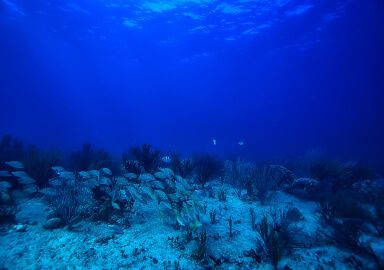Ray
Strange looking and often with a sting - rays are a group of bottom-loving, flat-shaped fish.
View 12 listings
12
listings
–
price starting from
6
countries
Where and When?
Most rays are marine, and many are found in inshore waters of the warmer areas of all the world’s oceans. Some, including the largest stinging ray, are freshwater, while a few are found in estuaries and lagoons. Manta rays are generally a warm water open ocean fish, but most rays are found in fairly shallow waters with sandy or muddy bottoms. Some, however, have been recorded at depths of up to 3 000 m. (9 800 ft.). Rays in warmer waters tend to be larger than those of temperate areas and freshwater stingrays are limited to tropical areas of the Far East and South America.
Many rays are solitary; some undergo clear annual cycles usually associated with breeding behaviour. Manta rays aggregate annually at certain times of year when “upwelling” results in large densities of their plankton food being more readily available. Entire populations of some ray species seem to move in clear and predictable annual migrations, such as that of the diamond ray (Dasyatis dipterura) off eastern South Africa. Some stingrays appear to come into bays or even estuaries to “pup”, usually in the warmer months.
About Ray
There are about 300 different kinds of rays, but all are contained within the Batoidea superclass, which, along with sharks, are part of the cartilaginous (elasmobranch) fishes. Rays are further divided into stingrays (about 223 species), electric rays (about 69 species), skates (270 species), sawfish (7 species) and guitarfish (38 species). Skates are similar to rays, except that they usually have thicker tails and lay eggs, while sawfish and guitarfish are elongate and “shark shaped”.
Rays have flat bodies, usually round or diamond shaped, with eyes and breathing spiracles on the tops of their heads and mouths and outlet gills below. Rays vary in size from 20-30 cm. (8-10 in.) to the enormous manta ray (Manta alfredi ) which can grow to 18.8 m. (29 ft.) and 2 404 kg. (5 300 lbs). Most rays have short, strong “crunching” teeth to eat the snails, clams, oysters, crustaceans and fish. Manta rays, however, cruise the oceans feeding on plankton using a massive mouth at the front of the body. All rays are “ovoviviparous”, in that the eggs are retained and develop in the body and fully formed pups are birthed.
How to Catch?
In most areas where rays are abundant there is little recreational fishing for them, because there are many other first-choice fishes to choose from. However, in some locations, for example the United Kingdom, there is a large number of enthusiastic ray anglers, as well as experienced and resourced charter operators ready to give an angler an excellent ray fishing experience.
Targeted ray fishing is almost always carried out from smallish boats using medium to heavy spinning tackle. Local knowledge is essential to fish where and when the rays are present and feeding. Most charter operators favour anchoring over a known suitable area and fishing with the bait lying on the bottom. Natural baits such as smaller fish, fish fillets, crabs or worms, are usually used; local anglers usually know best what works in a given location and time. Rays are strong fighters and often “suck” onto the seabed when hooked; skill and strength, combined with good tackle, is then essential to land a good-sized ray.








